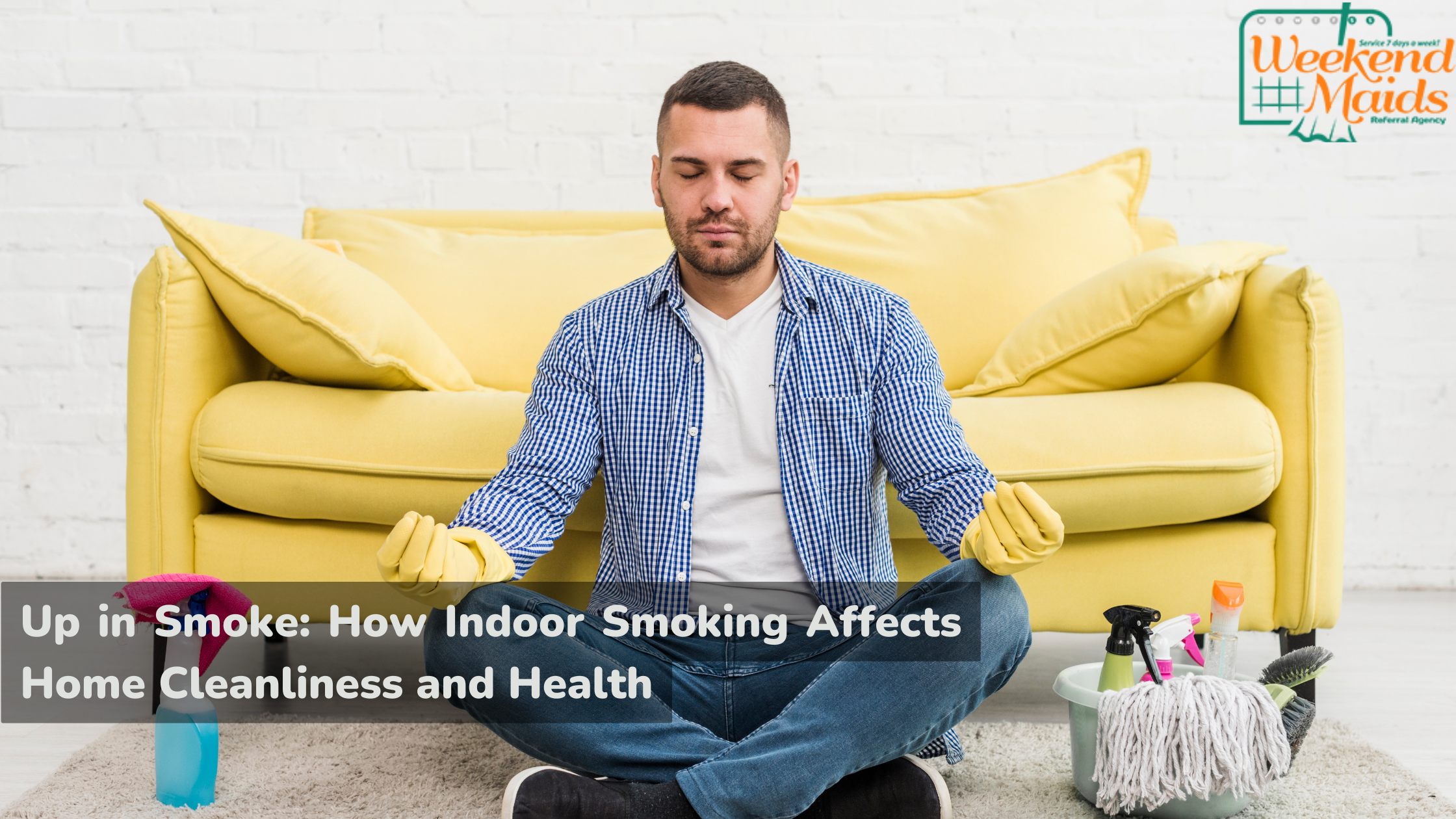
How Indoor Smoking Affects Home Cleanliness and Health
Smoking indoors, whether it’s tobacco, cannabis, or other substances, can have a far-reaching impact on the cleanliness of your home and the well-being of its inhabitants. In this comprehensive guide, we’ll explore the various ways indoor smoking affects your living space and offer actionable tips to mitigate its effects.
1. Lingering Odors and Residue
One of the most immediate and noticeable effects of indoor smoking is the presence of lingering odors and residue:
- Tobacco Odor: Cigarette smoke can permeate fabrics, upholstery, and even paint, leaving a persistent and unpleasant smell.
- Cannabis Aromas: Smoking cannabis can also leave a distinct odor that can be challenging to eliminate.
If you’re dealing with odors and residues from smoking, consider hiring a house cleaning service in San Diego to help restore freshness to your home.
2. Discoloration and Stains
Indoor smoking can lead to unsightly discoloration and stains on various surfaces:
- Yellowing Walls and Ceilings: Nicotine and tar can cause walls and ceilings to turn yellow over time.
- Stained Furniture and Carpets: Upholstered furniture and carpets can absorb smoke and develop stains that are difficult to clean.
For deep cleaning of stained surfaces, Weekend Maids offers professional cleaning solutions tailored to your needs.
3. Increased Cleaning Demands
Smoking indoors substantially increases cleaning requirements:
- Frequent Dusting: Smoke particles can settle on surfaces, leading to more frequent dusting and wiping.
- Residue Removal: Regular scrubbing of walls, ceilings, and other affected areas is necessary to remove the sticky film left behind by smoke.
Routine cleanings from a professional service, such as house cleaning in Poway, CA, can help maintain a clean living environment.
4. Impact on Indoor Air Quality
Smoking indoors has a profound effect on indoor air quality:
- Health Risks: Secondhand smoke exposure poses health risks, including respiratory issues and increased risk of diseases like lung cancer.
- Air Purification: Consider using air purifiers equipped with HEPA filters to improve indoor air quality. Learn more about how air purifiers can make a difference in our blog on How Indoor Air Purifiers Transform Home Cleanliness.
5. Fire Hazards
Indoor smoking poses a significant fire hazard:
- Accidental Fires: Carelessly discarded cigarette butts or embers can lead to accidental fires.
- Increased Risk: The risk of fire significantly increases when smoking materials are used indoors.
Having a reliable cleaning service can help keep your home free of fire hazards. Explore the range of services available through Weekend Maids.
6. Impact on Ventilation Systems
Indoor smoking can take a toll on your home’s ventilation systems:
- Clogged Filters: Smoke particles clog HVAC filters, reducing the system’s efficiency and increasing energy costs.
- Costly Repairs: Over time, smoking indoors may result in costly repairs or replacements of ventilation systems.
Routine maintenance and professional cleaning can prevent these issues. Consider using the Weekend Maids House Cleaning And Maids Referral Agency for regular upkeep of your home.
7. Smoke Residue on Electronics
Smoke residue can damage your electronic devices over time:
- Dusty Buildup: Smoke residue can accumulate on electronic components, leading to overheating and a reduced lifespan.
- Impaired Functionality: Long-term indoor smoking can impair the functionality of devices such as televisions and computers.
Keeping your home dust-free with professional cleaning can extend the life of your electronics.
8. Environmental Impact
Indoor smoking can contribute to environmental issues:
- Indoor Pollution: Smoke particles released indoors contribute to air pollution and can exacerbate health conditions like asthma.
- Respiratory Irritants: Smoke pollutants are respiratory irritants, making it difficult for those with asthma or allergies to breathe comfortably.
9. Legal and Lease Agreement Considerations
Before smoking indoors, consider the legal and lease agreement implications:
- Legal Restrictions: Some areas have laws prohibiting smoking in enclosed public spaces, including rental properties.
- Lease Provisions: Review your lease agreement to understand rules and restrictions related to indoor smoking.
If you’re renting, be sure to adhere to local and lease restrictions to avoid potential fines or lease violations.
10. Healthy Alternatives
Consider healthier alternatives to smoking indoors:
- Outdoor Smoking Areas: Designate outdoor smoking areas to minimize indoor smoke exposure.
- Smoking Cessation: Explore smoking cessation programs to quit smoking and improve your indoor air quality.
Conclusion: Clearing the Air
Indoor smoking leaves a lasting impact on the cleanliness of your home, indoor air quality, and the health of its occupants. If you choose to smoke indoors, take proactive measures to mitigate its effects, such as using air purifiers or regularly scheduling a professional house cleaning in Poway, CA. However, considering the health risks and potential damage to your living space, opting for healthier alternatives or quitting smoking altogether can lead to a cleaner, safer, and more pleasant living environment for you and your loved ones. For all your cleaning needs, Weekend Maids offers a range of services to help keep your home fresh and healthy.
